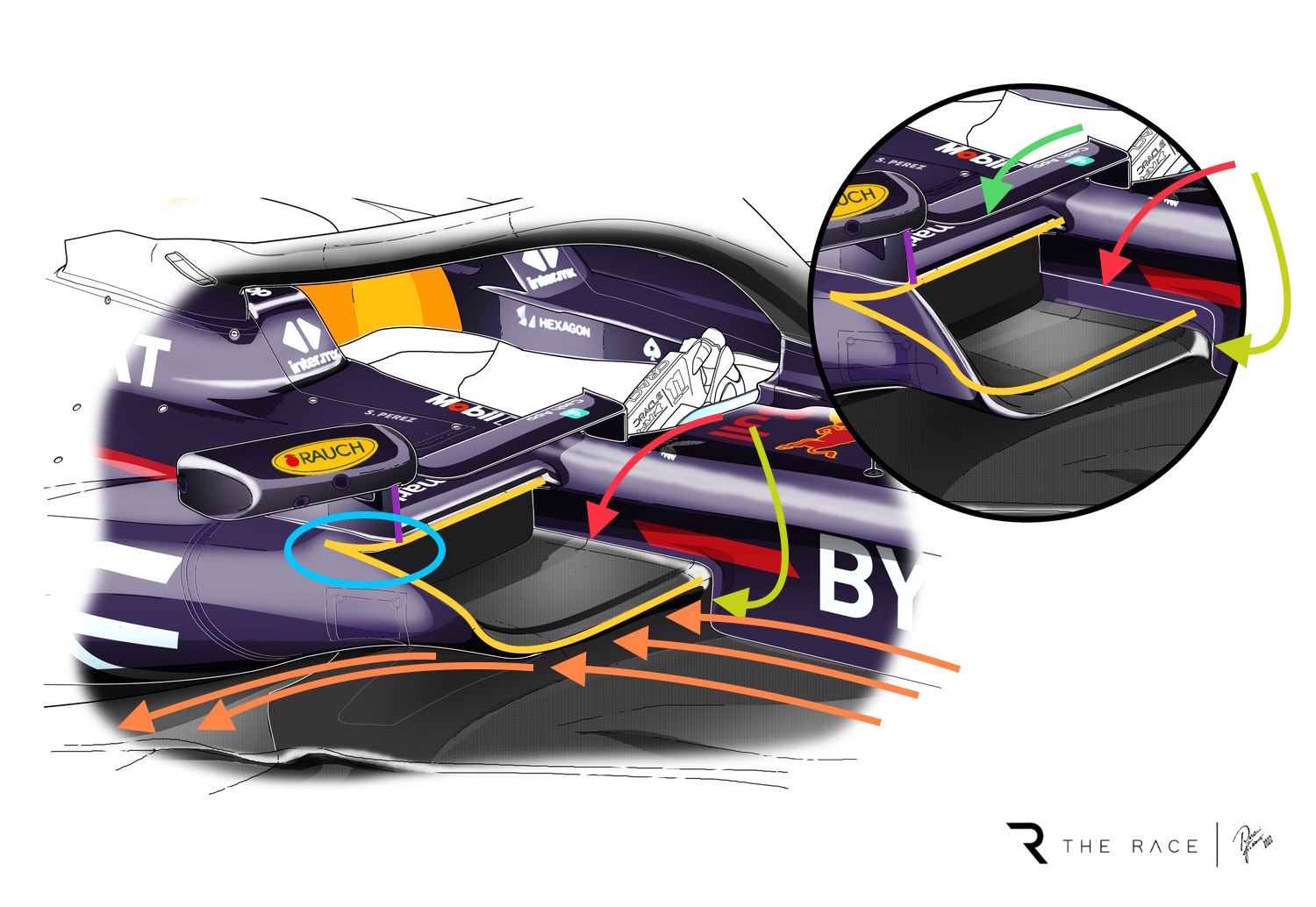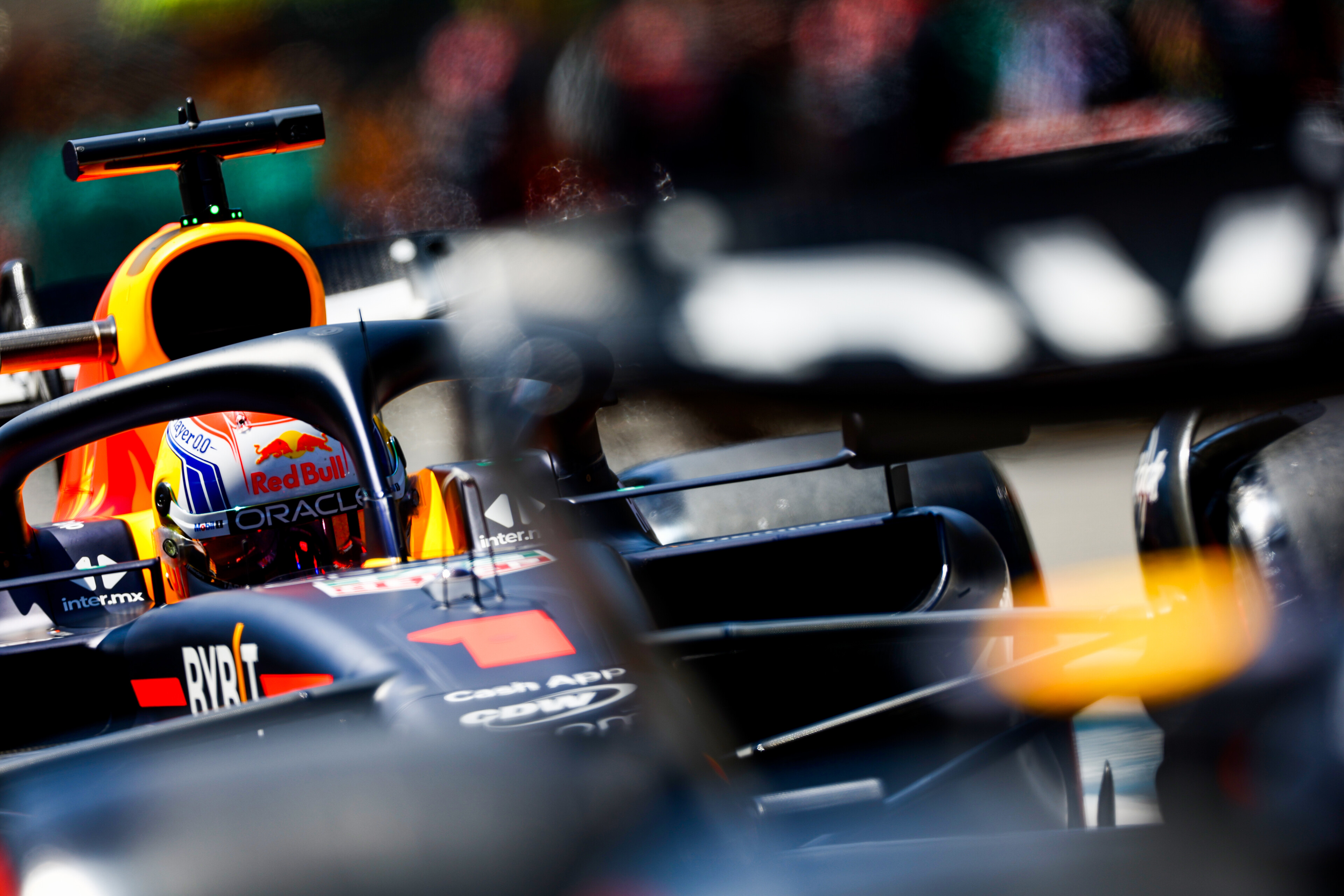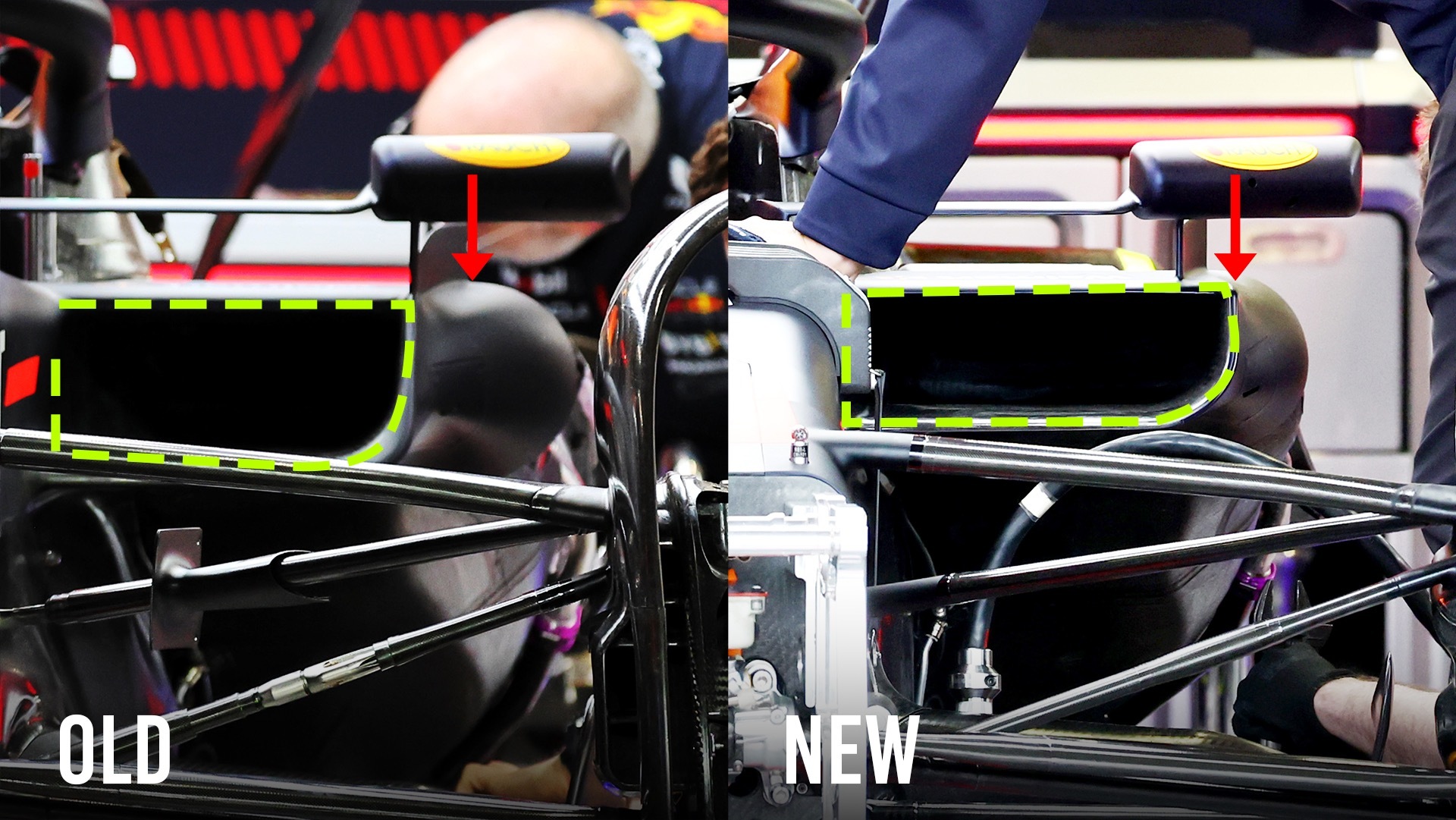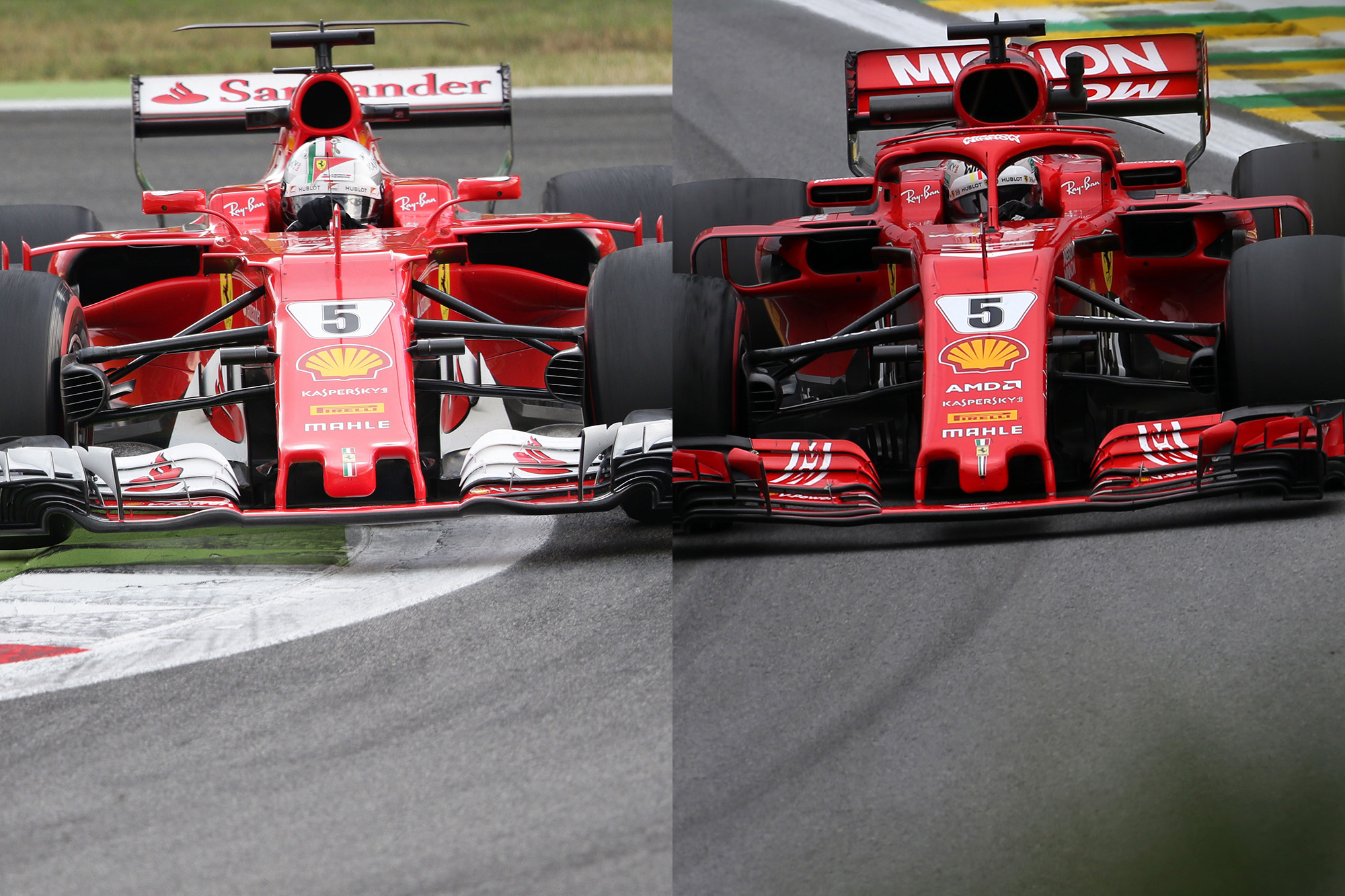The Red Bull Formula 1 team ran what was characterised as a revised cooling package during the Azerbaijan Grand Prix weekend. But it is far more than that.
To me, it is a fairly serious upgrade that increases and improves the airflow going through the sidepod front corner undercut (orange arrows).

It is important to minimise any blockage behind the front wing and to make sure that the wake coming off its trailing edge does not go directly into the radiator inlet. That’s why the height of this undercut is so significant. Also, the flow and the speed of that flow through this area is used to scavenge the airflow from underneath that front corner of the floor.
My red arrows show the body-split line that was always there. What Red Bull has done is lift the lower radiator intake surface up to the top of that split line. The leading edge of it is in the same place (lime arrow), as is the mirror vertical support (magenta line).
There is no magical cooling system without an inlet and an exit that is in line with the radiator area you are trying to cool the car with. But it depends how big a risk you want to take, or how confident you are in the heat rejection figures supplied by the power unit manufacturer.
Normally, the inlet would be 20-25% and the exit 30-35% of the radiator core area. Somewhere in that area is a good place to start.
Within the sidepod, you have a combination of radiators. Every team will be a little bit different, but mainly they will have a water radiator and an oil radiator mounted in the sidepod at a fairly shallow angle to the horizontal line. The combined size of these two radiators could be 80cm by 40cm each side of the car.

Specifying the radiator is a combination of face area to thickness. If you can fit it into the sidepod, the larger the face area is the thinner the radiator can be and the more efficient the flow through it will be – in effect reducing the induced drag.
Other smaller or lighter radiators such as the intercooler, hydraulic, gearbox and whatever else are placed higher up and fed by the inlets at the sides of the rollover bar. This is to allow the aerodynamic designers to optimise the radiator inlet size and the sidepod packaging to improve the car’s overall efficiency and maximise the downforce it produces.
It’s also important to make sure that the flow to that inlet is as tidy as possible. Turbulent flow will have a negative effect on the cooling. That’s why raising the lower edge will probably, as Red Bull stated in its declaration, have improved the cooling just that little bit.

From there, you will optimise both the inlet and outlet to get the optimum airflow speed for cooling through the radiator core.
If you make the inlet smaller, you can gain some downforce for the other downforce-producing surfaces downstream. If you make the radiator exit area smaller, you will reduce the drag.
However, it is very important you don’t con yourself when defining these openings. The exit can usually be tuned to suit each circuit, but you are effectively stuck with the inlet that you have got – except in Red Bull’s case, as it has now changed it.

The yellow inlet highlight line shows that the inlet is now wider. Again, that is confirmed by the magenta line on the leading edge of the mirror support. You could call it more of a letterbox inlet, but the overall inlet area is not much different.
One of the interesting things for me is the area inside the blue ellipse. On the earlier version of the inlet, this was simply a 90-degree corner. Now, Red Bull has swept the side and top surface rearward to form this small triangular section.
This could be to better define the area Red Bull wants the radiator spillage to flow through. Controlling this excess flow at high speed when the radiator just can’t flow the air mass presented to it is very important for the consistency of the aerodynamic flow structure.

One thing we need to always remember is that nothing is new. Look at the 2017 (left) and 2018 (right) Ferraris, with the letterbox inlet and dramatically undercut sidepod leading edge clear to see.
This proves that even if the concept of the car changes dramatically, as it did with the 2022 rule changes, the airflow structure around the car is still all about achieving more or less the same thing: maximum downforce and minimum drag for the optimum cooling performance.


